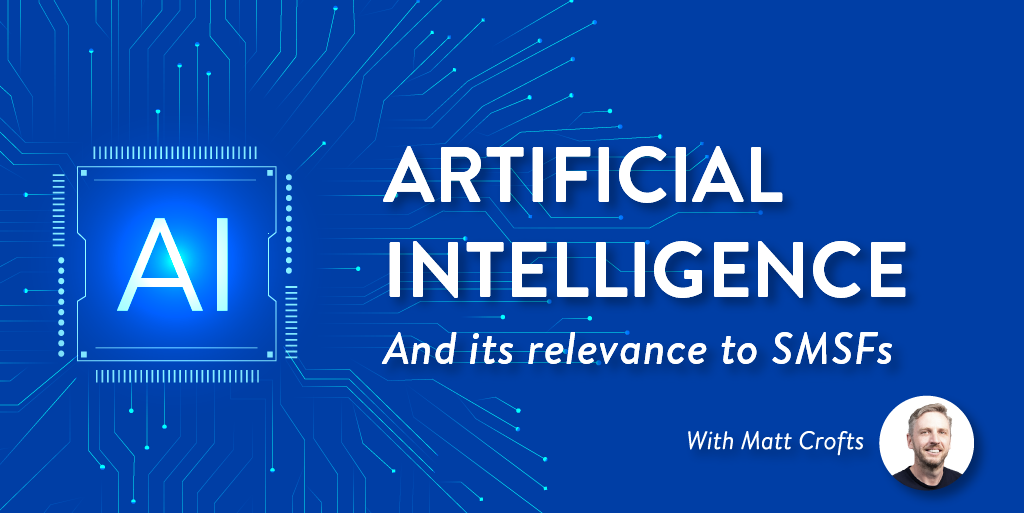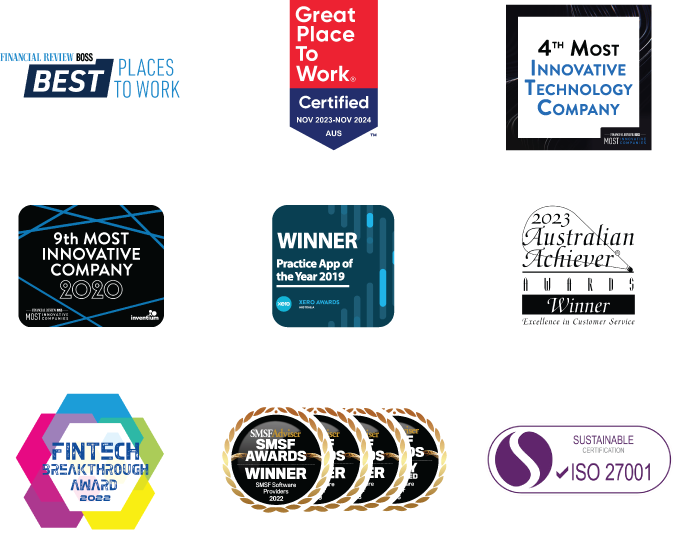
What is Artificial Intelligence?
”Artificial Intelligence, or AI, has been through a hype cycle in the last few years. This will be the first of my attempts to reduce some of this hype and best explain AI in terms relevant to Accountants and Planners.
The objective here is to encourage accountants and planners to lean into AI and better understand some of the benefits, as well as some of the limitations of AI.
Rather than start with complex definitions of AI, I find it more useful to think of AI as a tool you can now put to work to help automate the mundane repetitive tasks in your SMSF business. In its simplest form, AI is a new tool or subset of tools now available for accountants to put to work. These AI tools are driven by data, with the core purpose, to find patterns in that data using maths or more specifically algorithms that are able to find patterns.
Machine learning (ML) is a subfield of AI, often referred to as predictive analytics or predictive modelling. This form of AI is the most common AI tool in use today in many application such as Facebook or Gmail to make predictions about what you want to see or what your want to type.
Those already using BGL cloud software would have already seen it at work – we use it in Simple Fund 360 and Simple Invest 360. The incredibly talented development team was able to customise and leverage existing algorithms to learn from data, in order to build generalizable models that give accurate predictions or to find patterns. We found these predictive algorithms particularly useful for categorising commonly seen transactional-based data.
Why is AI/ML relevant to SMSFs?
With over 600,000 SMSFs there is a growing amount of bank transactional and investment data that is specialised yet similar in nature due to the various compliance and reporting requirements being mandated by the ATO.
The increasing use of bank feeds, and investment-based feeds are contributing to the growth in data as has the growth in cloud computing storage costs. This growth in what has now become known as big data has facilitated the utility of specialised ML algorithms. With a good knowledge of SMSF accounting, these data patterns can be discovered at both the industry level as well as the firm and fund level.
It is these patterns that can then add value through the presentation to the user in a form of smart and accurate predictions. We have found the most helpful and practical aspect of machine learning is to do the mundane processing of bank feeds and have built multiple levels (stages) of predictions into our Smart Matching area of the Simple Fund 360 software.
Best of all, machine learning technology keeps advancing, and BGL developers are continually learning and adding further enhancement to our Smart Matching process. Some recent functions include the ability to extract units and share codes from a bank feed and populate this data into the transactions. This is great for clients that don’t supply investment transactions for Australian or even overseas shares.
How does all this help you with running your SMSF business?
The whole purpose of the BGL Simple Fund 360 software is to drive more automation while ensuring accurate compliance.
Machine learning is unique and important in any accounting based system as it can continuously learn from every increasing amount of SMSF data. In this sense, your business is being automated by the industry shared knowledge, something that was simply not possible a few years ago.
Here are some of the ways BGL are using AI/ML to automate your SMSF business:
1) To automate the mundane coding and rule creation process – So you can keep the best employees and allow your firm to stay relevant with the latest technology without the significant cost of researching AI.
2) To reduce paper handling costs – With Smart Docs AI/ML augmenting the more basic collating and workpaper creation role, we have seen the best firms level up their employees. When done right it allows someone with less experience to process a Fund, they can level up more quickly and learn the ropes with the aid of AI.
3) To increase capacity – Through AI/ML automation we have seen some firms process fund transactions up to 4 times faster, this gives them more capacity to process more funds in less time and free them up for review functions and quality controls.
4) To improve the customer experience – This is something BGL is exploring with our Support Ticket system, making recommendations for possible suggested solutions to common problems. We are beginning to look at expanding this recommendation into further parts of the software using AI to help a new user possibly know what the next step in the process should be.
5) Exploring OCR and ML together – To help improve the process of extracting data from Paper or PDF based systems.
I hope this can help you lean into some of the technology that drives the latest cloud accounting technology forward. Please reach out to me in the comments if you would like to know more about BGL products or services and how they can be of assistance in your Accounting Business.
Thank you!


I like the field Soo much